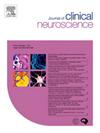肿瘤切除术开颅输血:发生率、危险因素和结果。
IF 1.9
4区 医学
Q3 CLINICAL NEUROLOGY
引用次数: 0
摘要
背景:由于贫血、缺血性脑损伤和出血的风险,在神经外科手术中经常需要输血(BT),特别是肿瘤切除的开颅手术。然而,BT可能增加围手术期并发症的风险。本研究旨在确定开颅行颅内肿瘤切除术患者中BT的发生率、相关因素和预后。方法:采用国家外科质量改进计划(NSQIP)的数据进行回顾性队列研究。我们纳入了2005年至2021年接受择期开颅手术切除肿瘤的成年患者。使用多变量逻辑回归来确定与BT相关的因素以及与手术后30天内接受BT相关的并发症。结果:40883例患者中,有3.65%的患者需要BT。与BT相关的显著因素包括:年龄50 - 60岁(OR 1.28 [95% CI 1.03-1.60])、女性(1.41[1.22-1.62])、体重不足体重指数(BMI)(1.81[1.27-2.57])、美国麻醉医师学会(ASA) 3-4级(1.64[1.39-1.95])、糖尿病(1.23[1.02-1.48])、慢性阻塞性肺疾病(COPD)(1.64[1.20-2.23])、术前贫血(2.84[2.49-3.26])、出血性疾病(2.37[1.63-3.46])、术前输血(16.96[8.09-35.56]),脑膜瘤指征(1.28[1.03-1.60])。肥胖患者较少需要BT(0.82[0.69-0.98])。需要BT的患者出现以下并发症的几率更高:延长呼吸机使用时间(OR 2.37[1.60-3.50])、尿路感染(OR 1.76[1.03-3.00])、计划外再手术(OR 1.49[1.14-1.93])、延长住院时间(OR 1.88[1.60-2.21])、主要发病率(OR 1.79[1.32-2.44])和全因死亡率(OR 1.34[1.16-1.55])。结论:在开颅行肿瘤切除术的患者中,与BT相关的因素包括年龄在60岁至60岁之间、女性、体重过轻的BMI、ASA 3-4级、COPD、贫血、出血性疾病、术前输血和脑膜瘤。BT还与较高的主要发病率、死亡率、较长的住院时间和手术后意外再手术风险相关。本文章由计算机程序翻译,如有差异,请以英文原文为准。
Blood transfusions in craniotomy for tumor resection: Incidence, risk factors, and outcomes
Background
Blood transfusions (BT) are often needed in neurosurgical procedures, especially craniotomies for tumor resections, due to risks of anemia, ischemic brain injury, and hemorrhage. However, BT may increase the risk of perioperative complications. This study aimed to determine the incidence, associated factors, and outcomes of BT in patients undergoing craniotomy for intracranial tumor resection.
Methods
A retrospective cohort study was conducted using data from the National Surgical Quality Improvement Program (NSQIP). We included adult patients who underwent elective craniotomy for tumor resections from 2005 to 2021. Multivariable logistic regression was used to identify factors associated with BT as well as complications associated with receipt of BT within 30 days of surgery.
Results
Among 40,883 patients, 3.65 % required BT. Significant factors associated with BT included age > 60 years (OR 1.28 [95 % CI 1.03–1.60]), female sex (1.41 [1.22–1.62]), underweight body mass index (BMI) (1.81 [1.27–2.57]), American Society of Anesthesiologists (ASA) class 3–4 (1.64 [1.39–1.95]), diabetes (1.23 [1.02–1.48]), chronic obstructive pulmonary disease (COPD) (1.64 [1.20–2.23]), preoperative anemia (2.84 [2.49–3.26]), bleeding disorders (2.37 [1.63–3.46]), preoperative transfusion (16.96 [8.09–35.56]), and meningioma indication (1.28 [1.03–1.60]). Patients with obesity were less likely to require BT (0.82 [0.69–0.98]). Patients requiring BT had higher odds of the following complications: prolonged ventilator use (OR 2.37 [1.60–3.50]), urinary tract infection (1.76 [1.03–3.00]), unplanned reoperation (1.49 [1.14–1.93]), prolonged length of stay (1.88 [1.60–2.21]), major morbidity (1.79 [1.32–2.44]), and all-cause mortality (1.34 [1.16–1.55]).
Conclusion
In craniotomy patients for tumor resection, factors associated with BT include age > 60, female sex, underweight BMI, ASA class 3–4, COPD, anemia, bleeding disorders, preoperative transfusion, and meningioma. BT is further associated with higher risks of major morbidity, mortality, longer hospital stays, and unplanned reoperations following surgery.
求助全文
通过发布文献求助,成功后即可免费获取论文全文。
去求助
来源期刊

Journal of Clinical Neuroscience
医学-临床神经学
CiteScore
4.50
自引率
0.00%
发文量
402
审稿时长
40 days
期刊介绍:
This International journal, Journal of Clinical Neuroscience, publishes articles on clinical neurosurgery and neurology and the related neurosciences such as neuro-pathology, neuro-radiology, neuro-ophthalmology and neuro-physiology.
The journal has a broad International perspective, and emphasises the advances occurring in Asia, the Pacific Rim region, Europe and North America. The Journal acts as a focus for publication of major clinical and laboratory research, as well as publishing solicited manuscripts on specific subjects from experts, case reports and other information of interest to clinicians working in the clinical neurosciences.
 求助内容:
求助内容: 应助结果提醒方式:
应助结果提醒方式:


